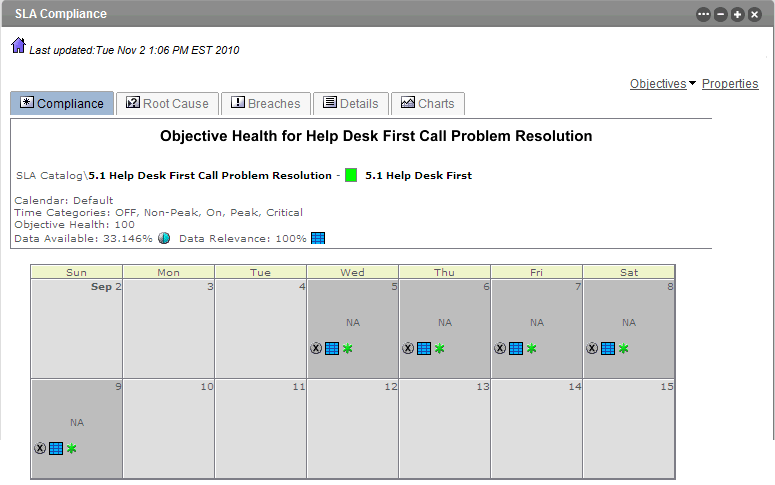7.11 Understanding the Key Metric
The key metric is available in the SLA Status Report and SLA Compliance Report.
These reports can include values, such as average response time, percentage of tickets closed, and so on. The value of the key metric depends on the type of objective defined in the SLA.
Table 7-7 describes how you can determine the key metric depending on the type of objective.
Table 7-7 Determining the Key Metric
|
Objective Type |
Key Metric |
|---|---|
|
Calculation |
Calculated result (such as average, sum, count, ratio, percentage, and so on) of values meeting the criteria as a percent or result of a query on data in an external database specified in the SLA Metric Catalog properties of an element. |
|
Availability |
Availability value as a percent. |
|
Downtime |
Total downtime that has occurred so far in during the measured objective interval. |
|
Outage |
Total outage count for outages that have occurred so far during the measured objective interval. |
|
Incident |
Total incident count for incidents that have occurred so far during the measured objective interval. |
|
Agreement |
Agreement health value for specified objective. |
If an objective is disabled, then the reports shows NA.
Show the key metric value for a specific objective for an SLA. In addition to displaying the value, there are the following options:
-
Key metric as a percentage, which is the key metric value multiplied by 100
-
Inverse of the key metric, which is 1‑key metric value
If the key metric is the value from an availability objective, the availability is calculated based on either the period availability of the calendar availability (whichever was specified in the objective definition) and the calendar applied to the SLA.
If the key metric is based on a Calculation objective using an external database, then the real-time status always shows NA. The objective only fires on a monthly interval.
Figure 7-7 SLA Compliance Report for Key Metric on Element with SLA Metric Catalog
